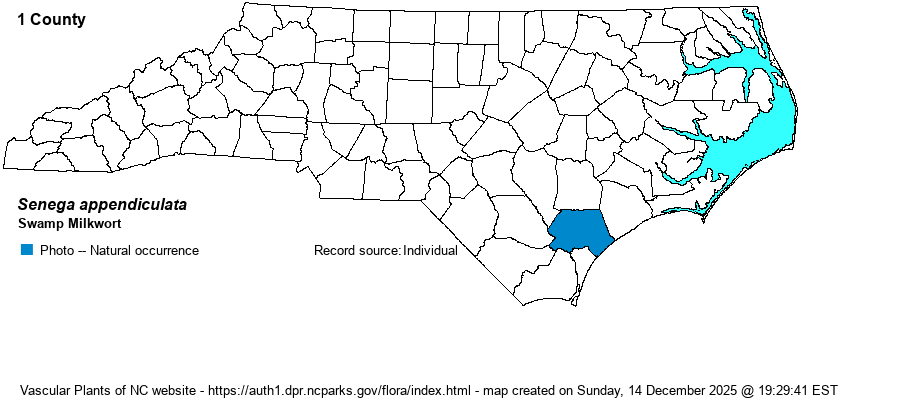| Author | (Vellozo) Pastore & Abbott | |
| Distribution | First discovered in NC on 30 May 2025 by Tyler Ekholm at Holly Shelter Game Land in Pender County (photos on iNaturalist). Near a trail off of Lodge Road. Independently, Bruce Sorrie discovered a second population at HSGL on 31 May, who collected a specimen and photos. These records are disjunct from GA (apparently; verified data needed for that state).
Global range is southeastern U.S., Cuba, Mexico, C.A., and S.A. In N.A., known from the Coastal Plain of TX, LA, MS, AL, FL, and GA?, and disjunct to NC. | |
| Abundance | Very rare in NC, with two known populations. One population has about 35 plants, the other three. Presuming these are natural sites, the website editors suggest a State Rank of S1 and a Significantly Rare status. (The species is not in the NCNHP database.) | |
| Habitat | One NC population occurs in recently mown (very closely!) powerline, with Lachnanthes caroliniana, Eupatorium mohrii, and Dionaea muscipula (nearby); the powerline surrounded by Longleaf Pine--wiregrass flatwoods and savannas. The other population occurs in less disturbed pine wiregrass flatwoods, with Dionaea and Drosera, near a shrub pocosin. Weakley (2024a) gives its habitats as "Bogs and pond margins". | |
| Phenology | The NC plants were in full flower in last week of May into first week of June. Weakley (2024a) gives the flowering and fruiting period as April to June. | |
| Identification | Senega appendiculata is an annual, has very slender stems up to 2 feet tall; alternate, linear-filiform stem leaves up to a inch (25 mm) long, reduced upward. In most plants, erect or strongly ascending branches (2-4) arise from the upper third of the stem and produce long, very narrow, terminal inflorescences up to 2-3 inches (8 cm) long. The tiny flowers are lavender to rosy pink, only about 2 mm long. In robust plants, lateral flowering branches occur mid-stem, in addition to the erect branches higher up. It is most similar to the rather odd S. incarnata, another milkwort with a wand-like appearance -- a tall flowering stem that seemingly looks "leafless". | |
| Taxonomic Comments | Formerly known as Polygala leptocaulis.
All of the former Polygala species in NC have now been moved to the genus Senega in 2023. | |
| Other Common Name(s) | No other common names are seen on websites; however, it needs a better name, as it seldom occurs within swamps with canopy trees. | |
| State Rank | [S1] | |
| Global Rank | G5 | |
| State Status | SR-D | |
| US Status | | |
| USACE-agcp | | |
| USACE-emp | | |

